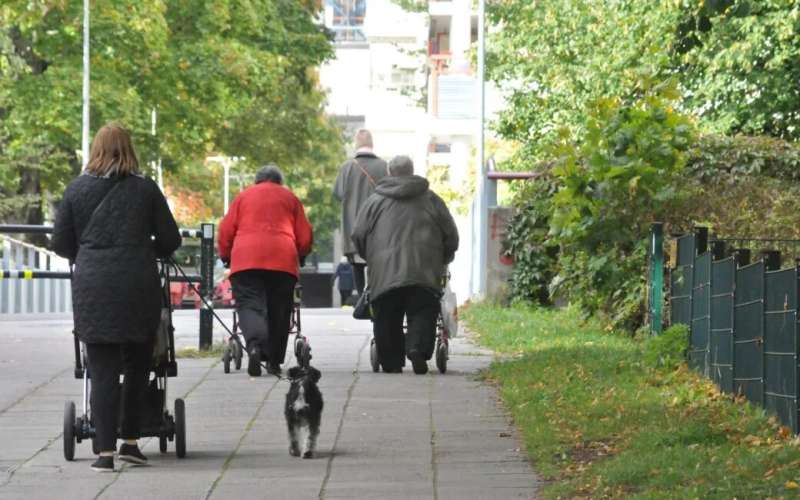When we look at the best situation, where accessibility is measured with typical assumptions, the situation appears to be good. As many as 93% of the inhabitants would reach their nearest store on foot in 15 minutes in the Helsinki metropolitan area. Credit: Christop Fink
It's that time of the year again, when temperatures around zero, snowfall and piling snow drifts make footpaths slippery and difficult to navigate in Finland. Many of us continue to walk, but others, especially older people, are more affected by the changing conditions.
At the same time, cities make efforts to improve the attractiveness of walking as part of the fight against climate change and increasingly sedentary lifestyles. One of the concepts that saw a lot of visibility is the so-called "15-minute city." It is based on the idea of short daily distances, where the most important services are within a quarter of an hour's walk from home. A growing number of cities in Europe and beyond have adopted the goal, and one of them is Helsinki, whose recent city strategy also features the 15-minute city.
A new study by the University of Helsinki's Digital Geography Lab examines the effect of age, winter conditions and opening hours on the walking accessibility to grocery shops in the Helsinki metropolitan area. The researchers measured people's walking speeds in varying summer and winter conditions and then modeled accessibility with different assumptions.
"Accessibility research and planning are often done from the average person's point of view and without considering temporal variation. In other words, the plans are made for healthy adults who walk in good conditions, which doesn't necessarily describe the daily reality of many older people very well, especially in winter," says Ph.D. researcher Elias Willberg.
"Even the 15-minute cities have been criticized for not emphasizing social equality enough, which we also wanted to address with this study," he continues.
The study found that the opening hours of shops, in other words: the density of the service network, clearly has the most significant effect on walking accessibility in the Helsinki metropolitan area. The challenges brought by age and winter conditions also have an effect.
When we look at the best situation, where accessibility is measured with typical assumptions, the situation appears to be good. As many as 93% of the inhabitants would reach their nearest store on foot in 15 minutes. However, the situation changes if we look at the worst-case scenario, which considers the accessibility of older people in typical winter conditions early in the morning. In this case, only 34% of the population reaches their local store as quickly.
"Assumptions matter in planning," says postdoctoral researcher Christoph Fink, who contributed to the study. "However, the results also show that there is large variation between older people, in some cases even more than between them and younger adults."
The researchers recommend more attention be paid in urban and transport planning to the needs of people with impaired mobility and walkability overall as part of sustainability goals. Concretely, this can mean prioritizing the maintenance of pedestrian streets by managing snow and preventing slippery surfaces, which are key factors especially for the walking activity of older people.
"The study strengthens the view of the importance of local services for an inclusive and walkable city," says Professor Tuuli Toivonen. At the same time, she calls for a perspective change. "When planning takes those in a weaker position and with less mobility as the starting point, it supports the walking activity of the entire population."
The findings are published in the Journal of Transport Geography.
More information: Elias Willberg et al, The 15-minute city for all?—Measuring individual and temporal variations in walking accessibility, Journal of Transport Geography (2022). DOI: 10.1016/j.jtrangeo.2022.103521
Journal information: Journal of Transport Geography
Provided by University of Helsinki
























